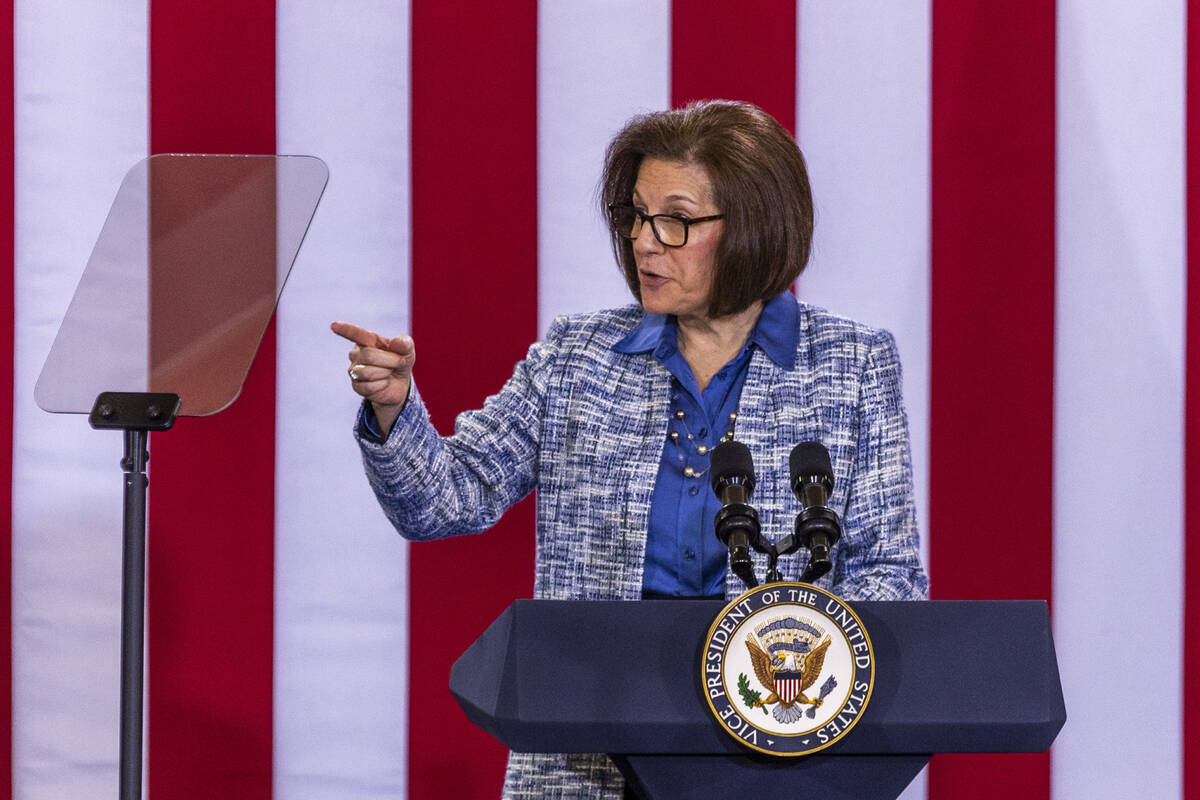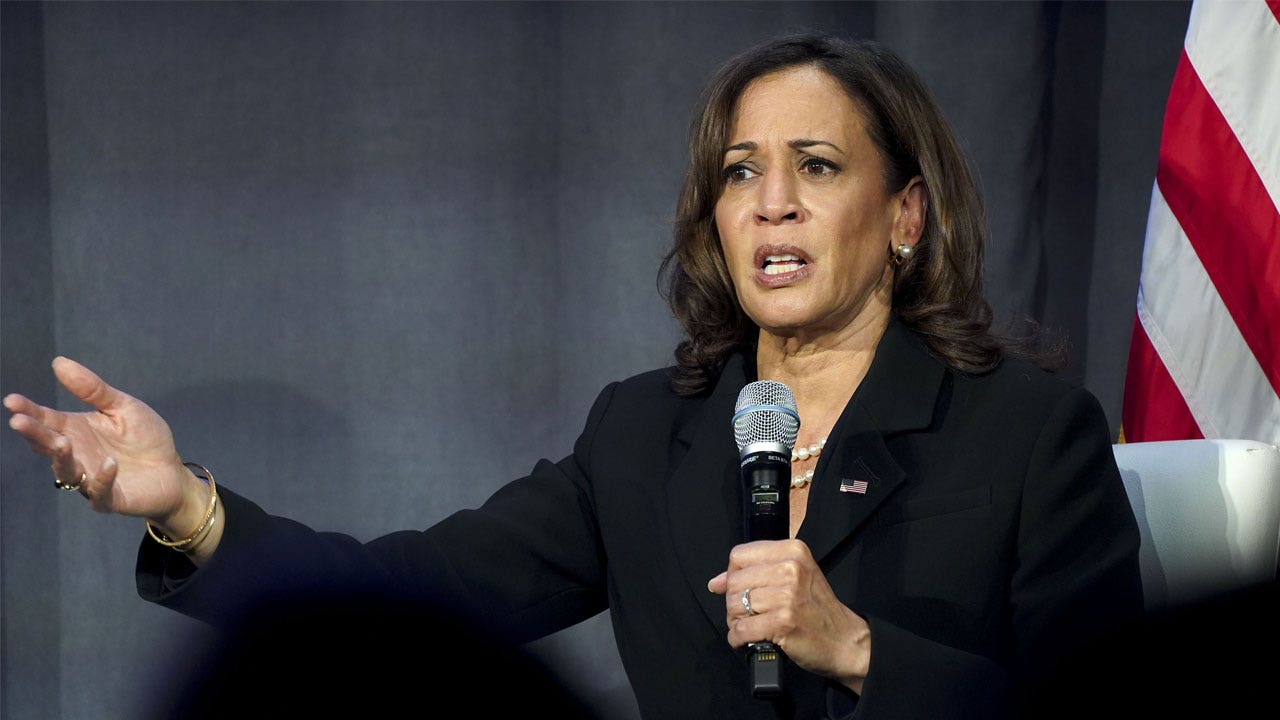Entertainment
Greg Kihn, “Jeopardy” singer and Bay Area rock fixture, dies at 75

Greg Kihn, the singer-songwriter who had a No. 2 hit with the rollicking “Jeopardy,” has died. He was 75.
Kihn died Tuesday from Alzheimer’s disease, according to a statement posted Thursday to Kihn’s website.
Kihn, a fixture of the Bay Area rock scene in the 1980s, was best known for the Greg Kihn Band’s upbeat 1983 hit “Jeopardy,” which was only eclipsed only Michael Jackson’s “Beat It” on the Billboard singles’ chart.
An early MTV staple, the song and video later earned a loving parody treatment from Weird Al Yankovic as “I Lost on Jeopardy.” (Kihn granted Yankovic permission to cover it, and made a cameo in the video.)
Kihn was born in Baltimore and moved to the Bay Area in the 1970s. He developed a sound mixing folk, classic rock, blues and hooky pop, and signed to local independent label Beserkley Records to release his first album in 1976. Kihn had his first Hot 100 hit with “The Breakup Song (They Don’t Write ‘Em),” which went to No. 15 in May 1981. He released scores of amusingly self-titled albums (“Next of Kihn,” “Citizen Kihn”), up through 2017’s “Rekihndled.”
Kihn was also a fixture of drive time radio in the Bay Area, serving as morning host on the San Jose-based station KUFX-FM (KFOX) for 17 years, retiring there in 2018. A horror buff, he also published several genre novels and edited a short story collection with original work by fellow rockers Ray Davies, Pete Townshend and Joan Jett. He was also passionate about his niche insect hobby, raising rare praying mantises.
Kihn is survived by his wife, Jay; children Ryan and Alexis; son-in-law Samora; grandsons Nate and Zuri; sister Laura; brother-in-law Lou; and nephews Larry, Lou and Matthew.

Movie Reviews
Rob’s Car Movie Review: Double Nickels (1977)

From the 1980s through to today, the majority of car movies tend to be comfortably budgeted and widely released productions from major studios or distribution entities. Films like The Cannonball Run, Need for Speed, John Wick, and Ford v. Ferrari relied on big-money stars and massive advertising campaigns to spread awareness of the movie and bring in those box office dollars.
In the 1970s, however, the opposite was more commonly true.
Low-budget films produced through the efforts of independent companies were churned out by the dozen, often aimed at the drive-in movie crowd. They usually relied on an easy-to-digest high concept, rarely featured an actor you had ever heard of, and were less than stellar in terms of storytelling and technical proficiency. Falling into this category were such pictures as Bobby Jo and the Outlaw, Moonshine County Express, King of the Mountain, and Van Nuys Blvd.
While I have watched a number of these types of movies in the past, one that I had never heard of before recently came to my attention, and I thought for this month’s episode of Rob’s Car Movie Review, I’d give it a review.
So, without further delay, I present to you Double Nickels (1977)!
The theatrical, one-sheet movie poster for Double Nickels. (Image courtesy of Smokey Productions.)
Double Nickels was produced and distributed in the United States by Smokey Productions. Having worked on H.B. Halicki’s prior low-budget movies, the original 1974 version of Gone in 60 Seconds and he Junkman, a relative unknown, Jack Vacek, took it upon himself to try his hand at being an auteur filmmaker. He wrote, directed, produced, edited, acted, and performed stunts in the picture.
Performing alongside of Vacek was an ensemble of totally unknown actors, including Trice Schubert, Edward Abrahms, Heidi Schubert, George Cole, Tex Taylor, and Mick Brennan.
Shot in my current place of residence, Malibu, California, and other locations in the Los Angeles area on a micro-budget of $150,000, Double Nickels tells the story of a pair of California Highway Patrolmen, Smokey (Vacek) and Ed (Abrahms), who monitor a strip of the US1 Pacific Coast Highway.

Jack Vacek as the main protagonist, California Highway Patrolman, Smokey. (Photo courtesy of Smokey Productions.)
A chance encounter with a speeder, George (Cole) who purports to be in the auto repossession business, leads Smokey and Ed to moonlight for George, ostensibly taking back sports and luxury cars that the owners have failed to make payments on.
The two lawmen prove highly adept at boosting cars, successfully outwitting the owners, and on a couple of occasions, the police, whom they must stay clear of, since moonlighting is against Highway Patrol policy.
All is going well as the two rake in the extra dollars to supplement their Highway Patrol paychecks, until Smokey and Ed discover that the cars they have been reclaiming were not, in fact, being financed by any financial institution. They confront George with this information, who promises to question the man who has been bankrolling his repossession business.

Edward Abrahms as Highway Patrolman, Ed. (Photo courtesy of Smokey Productions.)
George delivers a car personally to his backer, Lewis Sloan (Taylor), and queries the man about the nature of his business. Sloan, in a not-so-veiled threat, tells George to mind his own business, prompting George to tell Smokey and Ed that he believes they have all unwittingly gotten themselves mixed up in an auto theft ring.
Realizing their jobs and their very freedom is in Jeopardy, Smokey, Ed, and George go to Sloan’s home and take back one of the cars they had previously boosted. Subsequently, a high-speed pursuit develops between our protagonists and Sloan, setting up a climactic final act that will decide who prevails.
Double Nickels is perhaps the quintessential 1970s B-movie, as it contains all the aforementioned technical deficiencies of the species and much more.

George the repo man, portrayed by George Cole. (Photo courtesy of Smokey Productions.)
For starters, to my eye, the film was likely shot on Super-16mm and blown up to 35mm for distribution to reduce film stock costs. As a result, the movie is left with a squarish aspect-ratio and huge globs of grain in the image. The version I watched was probably transferred from a very old print that had color-shifted over the years, as the color palate leans heavily towards magenta. I actually didn’t mind this so much, as it lends the film a seedy, 1970s look that films like Boogie Nights strived to recreate decades later.
The other technical aspects, such as the live sound recordings and editing, are also quite poor. Sometimes, you simply cannot hear the dialogue or follow the action. Sloppy jump cuts and abrupt scene exits are scattered throughout.
As was the case in the previously mentioned 1974 incarnation of Gone in 60 Seconds, the acting is pretty much abysmal, with the often laughable and ludicrous written words from the screenplay not doing the thespians any favors.

Tex Taylor as auto theft kingpin, Lewis Sloan. (Photo courtesy of Smokey Productions.)
Likewise, the story itself is nothing to write home about, either. The idea that a pair of cops could not see what they were getting themselves into with the repossession scheme is fairly ridiculous and fails to suspend disbelief. The tone of the story also shifts incongruously from drama to over-the-top slapstick comedy at times.
Having just trashed the film, you might find it incredible that I managed to enjoy it to a degree.
The movie’s running time is a mere 88 minutes, so it doesn’t represent a major ask for your time. On a personal level, it was fun for me to see how Malibu’s scenery and landmarks had changed over the decades before I moved here.

The movie aptly captures the halcyon lifestyle of 1970s Southern California. (Photo courtesy of Smokey Productions.)
The movie also acts as a snapshot of 1970s Southern California in the laconic, beach-and-sun-and-chicks-in-bikinis lifestyle that it presents. Hillarious and kitschy are the hairstyles, mustaches, and wide-lapeled, open shirts and bell-bottomed jeans throughout. Gen-Xers like me just love that stuff as it reminds us of our childhoods.
What’s more, the movie delivers in spades in terms of the automotive action.
While we are not presented with multitudes of raucous, high-end muscle cars from the era, likely because the film’s miniscule budget didn’t permit procuring them, we are treated to a few icons of the period.

Smokey drives this awesome 1968 Chevy Chevelle SS in the film’s climactic chase sequence. (Photo courtesy of Smokey Productions.)
The two best cars are the ones that are used in the 17-minute car chase that ends the movie: a 1968 Chevy Chevelle SS and a ‘73 Chevrolet Corvette C3.
The Chevelle, driven by Smokey, is unusual in that it is painted in code MM Burnished Saddle Metallic, a rare medium brown color, with white over-the-top stripes. It features aftermarket mag wheels, a black interior, and, as we see multiple times, is equipped with a manual transmission, which Smokey aggressively rows.
The C3 is driven by Sloan, who consistently chomps on a cigar while sawing at the steering wheel, with his henchman in the passenger seat occasionally leaning out of the window to fire off rounds at Smokey’s car with his .45.

Lewis Sloan uses this Bright Orange ’73 Corvette to pursue Smokey. (Photo courtesy of Smokey Productions.)
The ‘Vette looks fantastic in code 86 Bright Orange with a black interior, and is an automatic transmission car. Sadly, we never get a look under the hood of either car, but do hear their V8s roar throughout the spectacular pursuit.
Another car that features prominently in the film is Smokey’s dilapidated 1957 Chevrolet Task-Force 3100 series pick-up.

Smokey’s 1957 Chevrolet Task-Force 3100 series pick-up is used in a chase sequence in the Los Angeles River. (Photo courtesy of Smokey Productions.)
Seemingly ancient and covered in peeling paint and primer, the truck features a manual transmission and is involved in multiple chase sequences, including one in the Los Angeles River.
Other vehicles in the movie include multiple Cadillacs, a wild dune buggy, 1970s-style custom vans, super-cool 1974 Dodge Monaco and ’72 Plymouth Satellite police cars, George’s gorgeous 1977 Mercedes-Benz 450 SEL, a 1966 Lincoln Continental with suicide doors, and Smokey’s 1975 Norton Commando 750 for motorcycle fans.
Though far from being a hot car, I’d be remiss in not mentioning the 1971 Ford Pinto that Ed escapes from the cops in by driving it down several flights of stairs. Quite a stunt!

Even the movie’s police cars, like this 1972 Plymouth Satellite are cool. (Photo courtesy of Smokey Productions.)
If you go into Double Nickels forewarned that it is no Citizen Kane and that it possesses some of the worst technical and storytelling facets of 1970s low-budget filmmaking, it’s not impossible to enjoy the movie.
I tend to liken it to something you might watch if it was the only thing on TV at 3 am or if you were sick in bed. For all its bad acting and implausible plot machinations, it does nostalgically capture a Southern California that once existed and has some enviable cars and superb pursuits in it.
As such, I give Jack Vacek’s magnum opus five out of ten pistons.
Movie Reviews
Thangalaan Movie Review – Gulte

1.75/5
2 Hr 36 Mins | Action | 15/08/2024
Cast – Vikram, Parvathy Thiruvothu, Malavika Mohanan, Pasupathy and others
Director – Pa. Ranjith
Producer – K.E. Gnanavelraja, Neha Gnanavelraja
Banner – Studio Green
Music – G.V. Prakash Kumar
Chiyaan Vikram is known for portraying versatile roles, but often, his script selections don’t match the versatility of the characters he plays. This time, he teamed up with acclaimed director Pa. Ranjith for the film Thangalaan. The movie was bankrolled by KE Gnanavel Raja under the banner Studio Green. Thangalaan has hit the screens today on the occasion of Independence Day. Let’s check how it turned out to be.
What is it about?
The story takes place in the 1800s in the Madras Presidency. British General Lord Clement plans to dig for gold in the ancient gold mines located in the Kolar region. However, he needs labourers to do the mining. That’s when he learns that the tribals of Veppur village in the North Arcot region are traditionally involved in mining this area. Clement hires Thangalaan (Vikram) to do the job. Thangalaan, along with his family, decides to take up the task. Did Thangalaan find the gold? Who is the mysterious woman named Aarthi? What did the British General do to Thangalaan? These elements form the main crux of the movie.
Performances: Vikram has put his blood and sweat into the role of Thangalaan. We all know how dedicated he is to the roles he plays. He underwent a great physical transformation and delivered a memorable performance. Parvathy, as Gangamma, delivered a fierce performance. Malavika was noteworthy in her role. Daniel Caltagirone and Pasupathy also stand out with their performances. These are the main characters, and they performed their roles with perfection.
Technicalities:
Writer and director Pa. Ranjith is known for making films that deal with oppression, and Thangalaan is no different from his other movies. The core plot is interesting, but Ranjith’s screenplay didn’t do justice to the story. The screenplay is very slow and cluttered most of the time, making this by far the weakest work of the director.
GV Prakash Kumar delivered an outstanding background score, but the songs are completely forgettable. The cinematography by A. Kishor is commendable; however, the high-contrast visuals may not appeal to all sections of the audience. The production values are good and serve the story well. The editing was horrendous, especially in the second half of the movie. The visual effects were subpar, and seeing such VFX work in a high-budget movie like Thangalaan is very disappointing.
Thumbs Up:
Vikram
Other Lead Actors’ Performances
Thumbs Down:
Lacklustre Screenplay
Sync Sound
Visual Effects
Editing
Analysis:
Pa. Ranjith is one of the few filmmakers who doesn’t shy away from portraying his political and social ideologies in his movies. When he blends his ideology well with commercial elements, we get films like Madras and Sarpatta Parambarai. If he doesn’t, we might end up with a Kabali or Kaala. Thangalaan falls into the latter category.
The major flaw of this movie is the screenplay. It is too random and goes haywire after a point. The first half is very slow and boring, while the second half is clueless with no clear direction. Even effective casting and strong performances couldn’t save the film from its lacklustre screenplay.
The mythical elements were not blended well into the proceedings and failed to connect with the audience. Horrible visual effects and poor editing make the film a tedious watch. On the whole, Thangalaan has nothing to offer except for Vikram’s honest performance.
Bottomline: Vikram’ Efforts Failed Once Again
Rating: 1.75/5
Tags Thangalaan Review
Entertainment
Arrest made in probe of Matthew Perry's ketamine death

Federal authorities have made an arrest in connection with the death of “Friends” star Matthew Perry, law enforcement sources told The Times on Thursday.
Few details were available, and officials have scheduled a news conference for later in the morning.
Sources told The Times that several search warrants were served on targets of investigation and evidence was seized. Federal charges have been filed, said the sources, who were not authorized to speak publicly on the matter, and will be revealed by the U.S. attorney’s office.
Perry was found dead in the hot tub of his swimming pool at his Pacific Palisades home on Oct. 28. Trace amounts of ketamine — which is sometimes used to treat depression — were found in his stomach, according to the Los Angeles County medical examiner.
But the level found in his blood was about the same as would be used during general anesthesia, his autopsy showed.
The Times reported in June that investigators with the Los Angeles Police Department, the Drug Enforcement Administration and the U.S. Postal Service had linked several people to procurement of the ketamine.
The drug in Perry’s system caused cardiovascular overstimulation and respiratory depression, the medical examiner reported. Other contributing factors in his death included drowning, coronary artery disease and the effects of buprenorphine, a medication used to treat opioid-use disorder.
The autopsy report noted that Perry had no other drugs in his system and had been 19 months sober at the time of his death. There was no evidence of illicit drugs or paraphernalia at his home.
The medical examiner also noted that Perry, 54, had diabetes and suffered from chronic obstructive pulmonary disease, which refers to a group of diseases that cause airflow blockage and breathing-related problems. He at one time had a two-pack-a-day cigarette habit.
A coroner’s investigator interviewed a person close to Perry who described him as in “good spirits” and said he had quit smoking two weeks before his death and was weaning himself off ketamine.
Ketamine is a legal medication commonly used as an anesthetic.
But it is increasingly offered “off label” at private clinics in an effort to treat depression and other mental health disorders. In 2006, the National Institute of Mental Health concluded that an intravenous dose of ketamine had rapid antidepressant effects.
Experts have said ketamine is generally safe and there are few reported overdoses. However, people are at a higher risk of bad outcomes if they have underlying conditions, such as high blood pressure or breathing problems.
-
News1 week ago
The ‘Blue Walz’: How a low-key Midwestern governor shot to the top to be Harris’ VP pick | CNN Politics
-

 News1 week ago
News1 week agoKamala Harris holding rally in Pennsylvania to introduce running mate after securing Democratic nomination
-

 Movie Reviews1 week ago
Movie Reviews1 week agoMinmini Movie Review: A soothing and understated film with characters to root for
-

 World1 week ago
World1 week agoVenezuela launches probe against opposition leaders Gonzalez, Machado
-

 Culture1 week ago
Culture1 week agoIf that was it for Simone Biles' Olympic career, let's all appreciate what we just saw
-

 World1 week ago
World1 week agoNorth Macedonia on the energy transition path out of coal
-

 World1 week ago
World1 week agoThe day after in Dhaka
-

 World1 week ago
World1 week agoEx-Catalan leader Puigdemont headed back to Spain despite fear of arrest
















